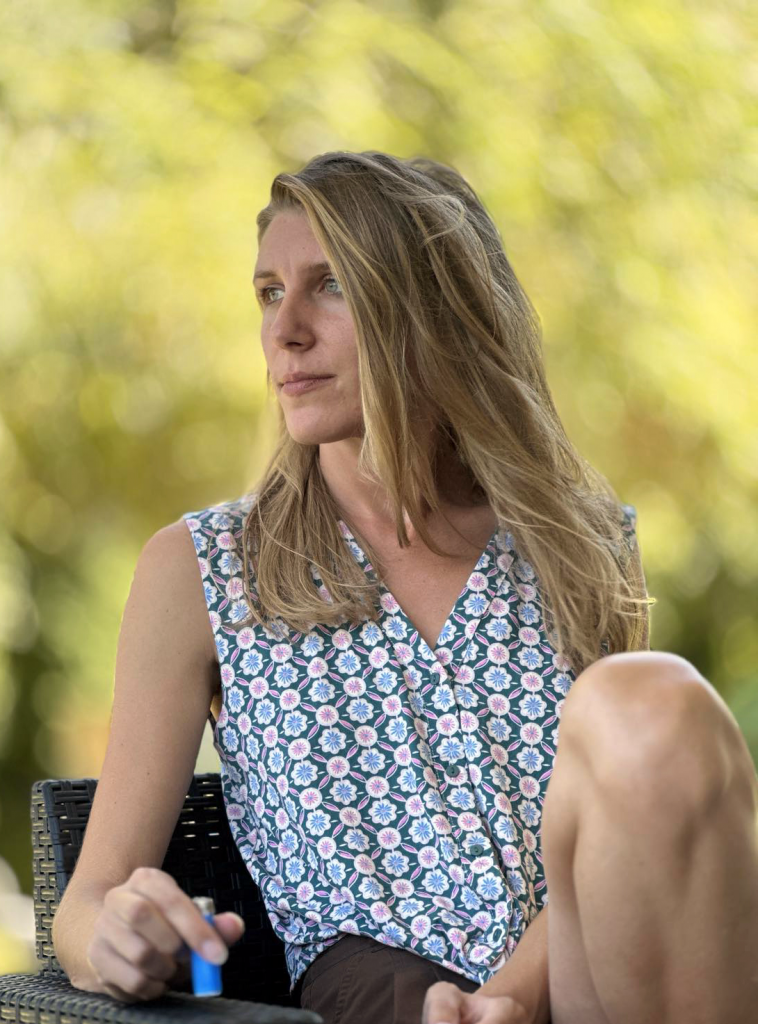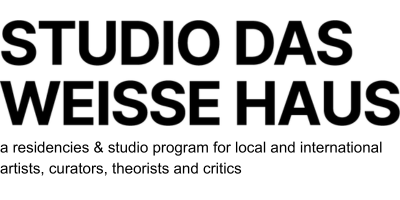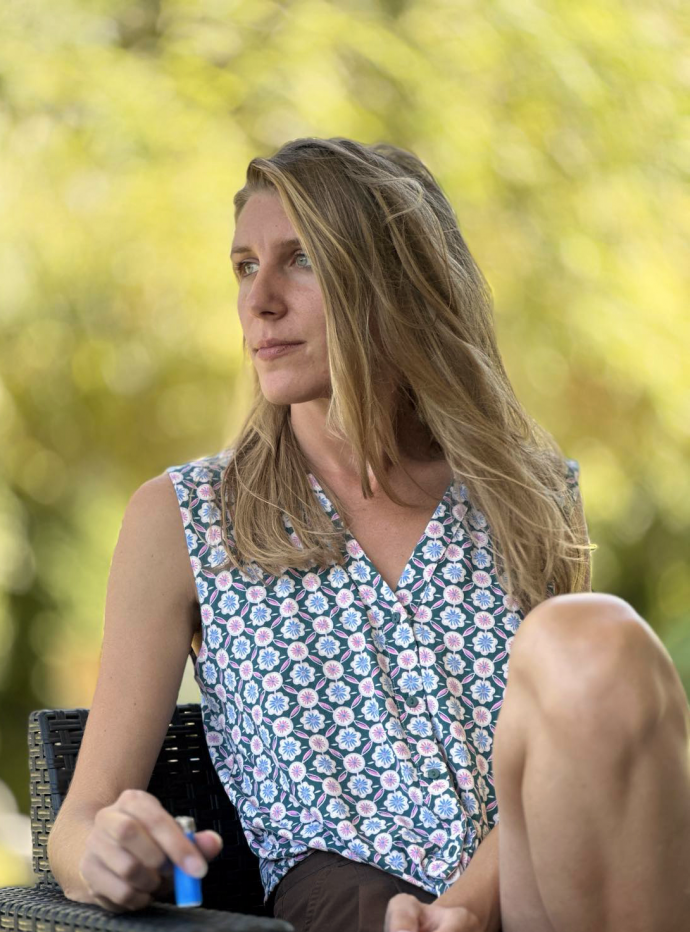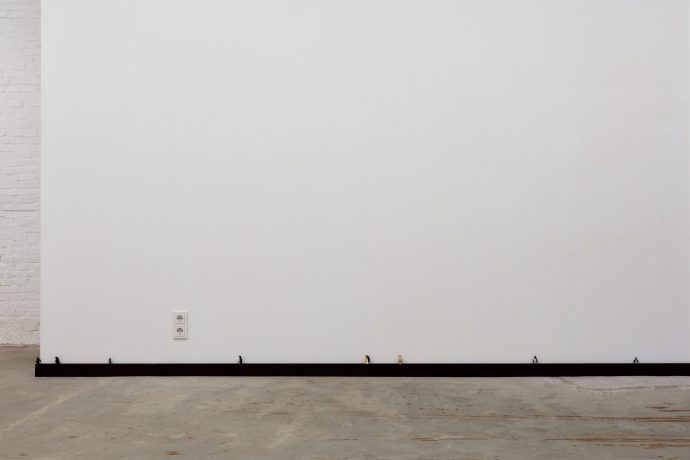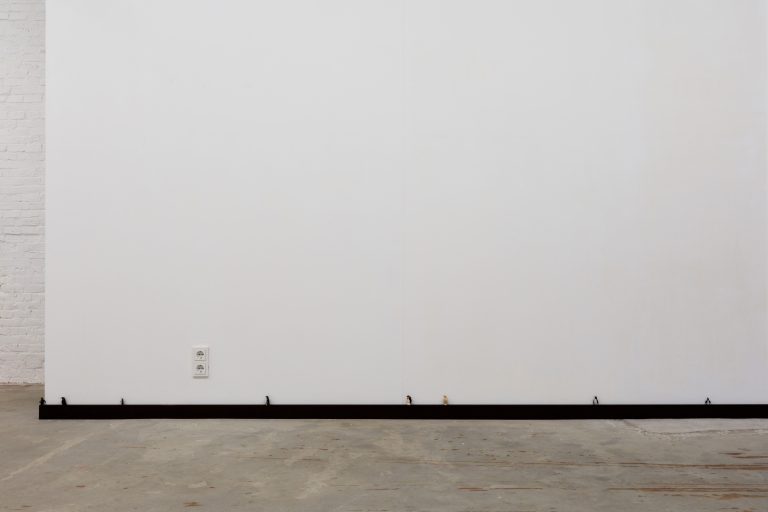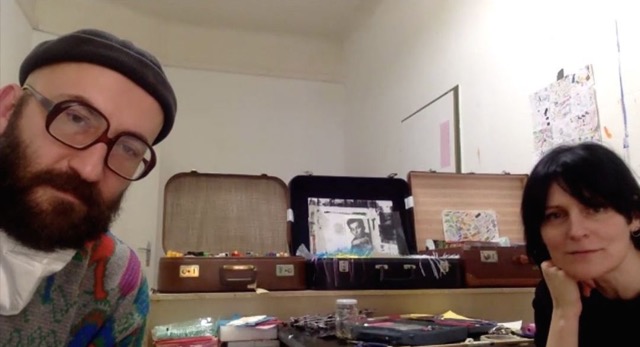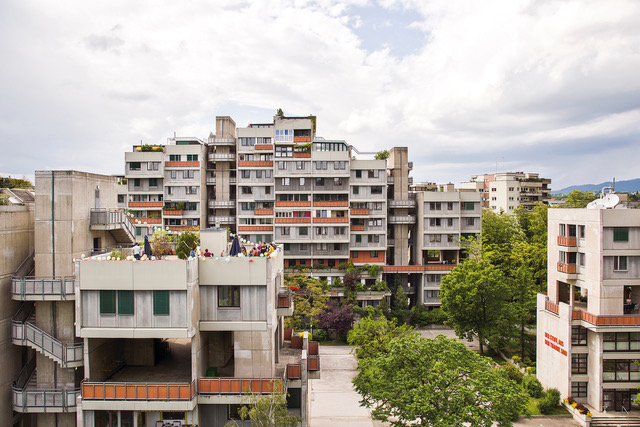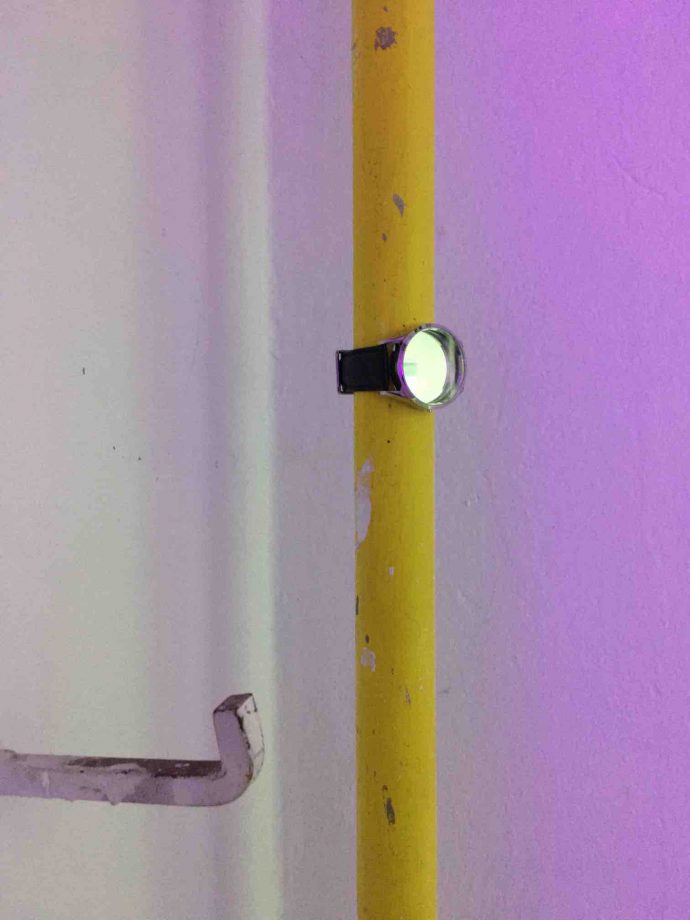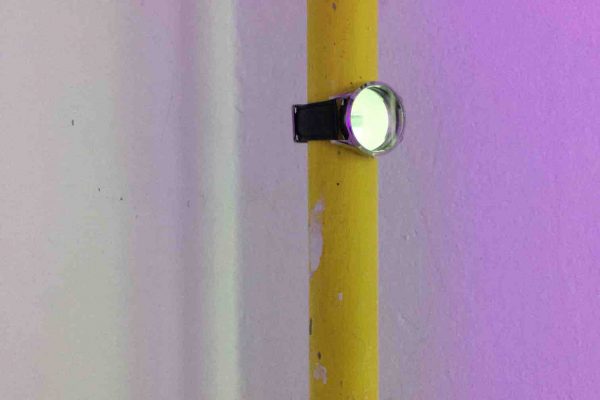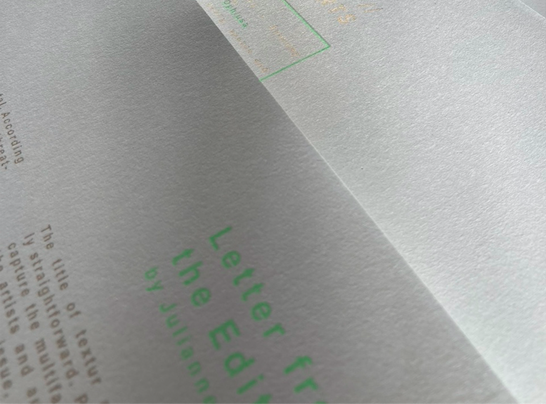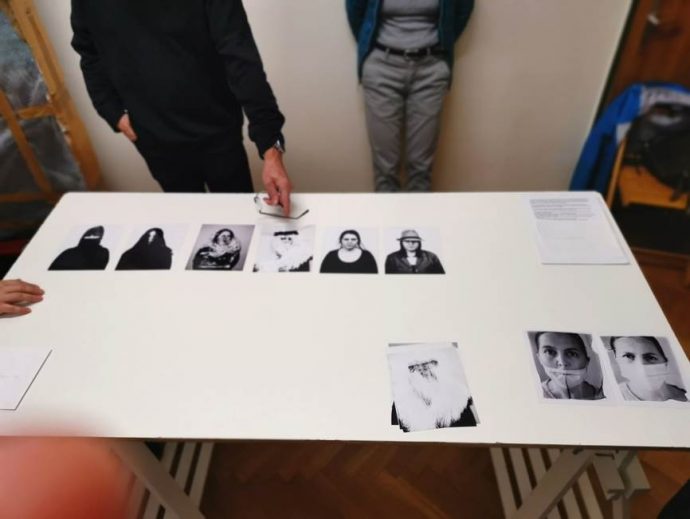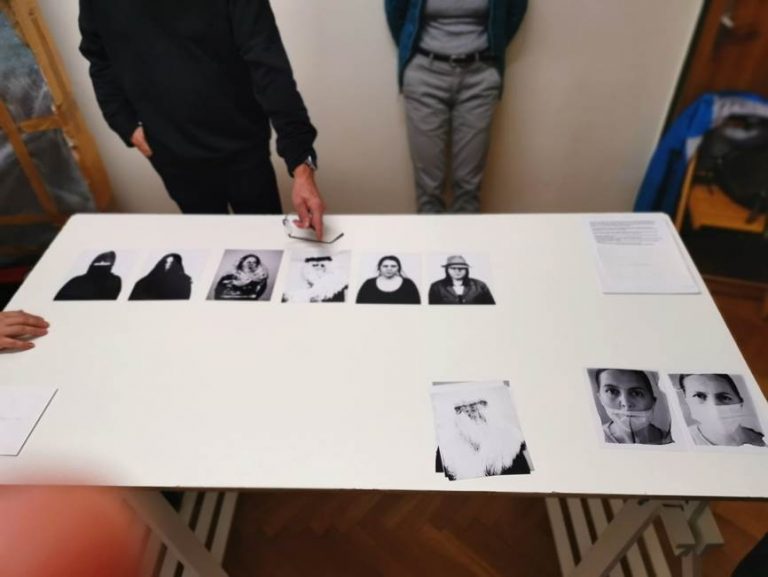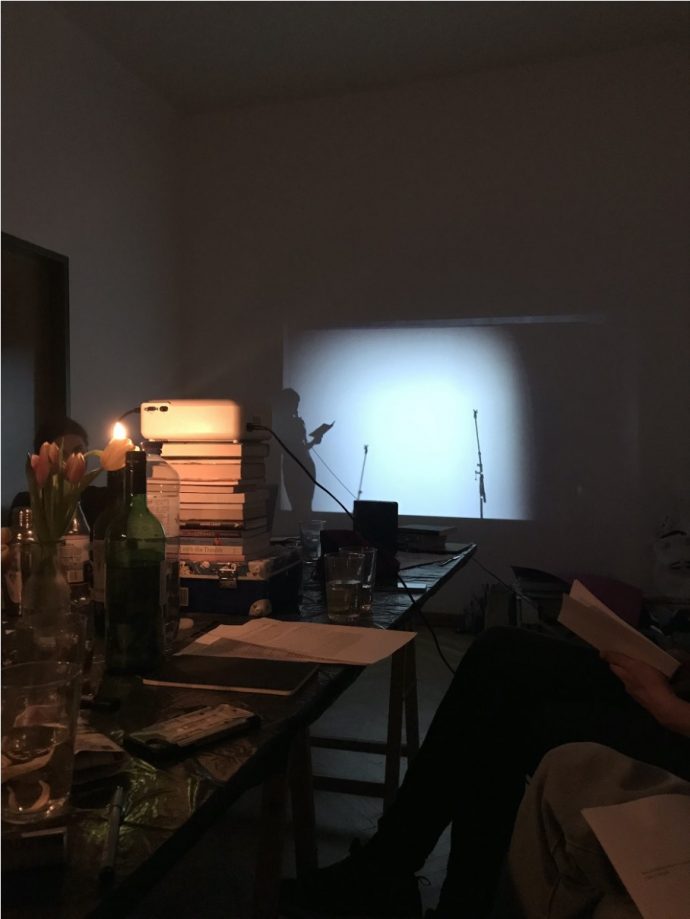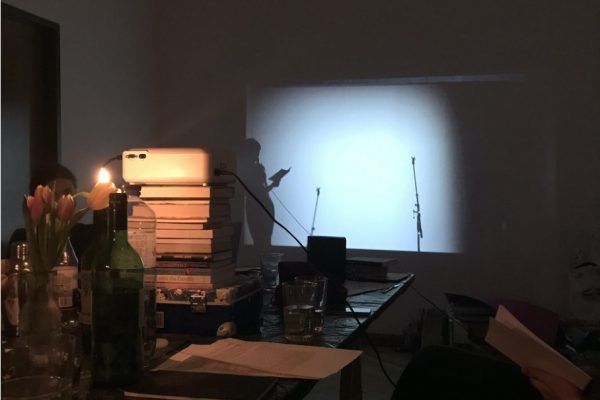Die Architektur eines Raums, Layout eines Textkörpers, beide können in Sehregime eingreifen, Elemente priorisieren oder vernachlässigen. Inwiefern kannst du diese für dich in ‚Fußnoten und Fußleisten‘ nutzbar machen? Stellt die Umlenkung der Aufmerksamkeit auf die Ränder eine Subversion des Sehregims für dich da?
Das wäre zumindest der Versuch. Die Frage ist natürlich, was es bringt, den Blick in eine andere Richtung zu lenken: auf den Boden, nach unten, etwas, auf das wir normalerweise ‚hinunterschaut‘. Ob das impliziert, mit den üblichen Perspektiven wäre etwas nicht in Ordnung, oder ob es sich auch einfach um eine Ergänzung und Erweiterung handelt, lasse ich lieber offen. Deutlich ist für mich, dass so betrachtet Fußnoten und Fußleisten etwas mit den Voraussetzungen, Grundlagen oder Rahmenbedingungen eines Textes, eines Raumes, zu tun haben, dass ich es für wichtig halte, sich damit auseinanderzusetzen. Könnte es bei diesem Weglenken vom gewohnten Sehen auch um ein Verlangsamen handeln? Und könnte ein simples Abstandnehmen dieser und auch meiner eigenen Gewohnheiten ausreichen?[1]
Nach dieser intensiven Phase der Recherche rund um die Fußleiste, gibt es schon Ideen, wohin sich das ganze weiterentwickeln wird?
In meiner Zeit in Wien habe ich viele Stunden in zum Beispiel der Bibliothek des Architekturinstituts verbracht, aber doch weniger Material zur Fußleiste finden können als ich es mir erhofft hatte. Geschrieben und publiziert wurde darüber nicht viel. Irgendwie ist das auf dem zweiten Blick auch gar nicht schlimm, so ein Zwischenstand. Vielleicht ist es etwas, das ich selbst tun sollte, und das noch kommt. Es hat mich aber vor allem verwundert, weil gerade Österreich eine ganz spezielle Form der Fußleiste kennt, die der Ausgangspunkt meiner Zeit in Wien war. Diese zu 45° abgeschrägte, klassische Fußleiste habe ich nur in österreichischen Altbauten gesehen, in Wiener Wohnungen, sowie das MAK oder das Kabinett der Secession – sie sind aber auch in die 1939 von Rudolph Schindler gestalteten Mackey Apartments in Los Angeles gelandet. Etwas, das ich noch gerne verstehen möchte, ist, wie (und vielleicht warum) sie von einem als modernistisch bekannt stehenden Architekten wiederaufgenommen worden wurden. Wo ich bis jetzt in meiner Arbeit auf das Geschriebene fokussiert war, ist die Recherche in den letzten Wochen mehr Richtung oraler Geschichte gerückt, Gespräche mit Architekt*innen und Künstler*innen. Auch weitere Fragen nach einem möglichen Unterschied zwischen Fußleisten in Ausstellungs- und Wohnräumen kamen auf. Und noch grundsätzlicher, wo sie eigentlich stehen und wie sie zu kategorisieren sind: Wann gehören oder gehorchen sie den Boden? Wann sind Fußleisten Teil der Wand?
Auf jeden Fall hab ich zunächst vor, als Beitrag zu einer Ausstellung hier in Wien, kommenden März einen Raum mit Fußleisten zu versehen. Was noch offen ist, ist die materielle und visuelle Beschaffenheit dieser Fußleisten. Die skulpturale Umsetzung, an die ich denke, wäre in diesem Fall Übersetzung in ein anderes Medium. Statt Strategien wie sie aus Marmor zu meißeln, zu vergrößern oder zu verkleinern habe ich angefangen in eine andere Richtung, an andere Möglichkeiten zu denken. Was ich vermeiden will –auch wenn es vielleicht unvermeidlich ist– wäre die Fußleisten mit Text oder Sätzen zu versehen. “Du verwendest die Worte als Mäntel,” hast du mir vor unserem Gespräch im Off gesagt. Dieser Vergleich gefällt mir sehr. Ich habe hier also in einem Second Hand Laden nah zum Botanischen Garten ein Buch aus den 60ern gefunden, mit dem Titel Ein Schauspieler ohne Text.[2] Vielleicht versuche ich eine Fußleiste Textur zu geben, indem ich sie wie die Buchrücken dieses Buchbandes mit Leinen verkleide. Mit Malerei und der Leinwand hätte das wohl weniger zu tun, aber schon mit der Tapete, die ja auch eine Wand-Tapete sein kann – ein mittlerweile unüblicher Begriff. Ich bin neugierig wann und wie eine Neben- zur Hauptrolle werden könnte? Oder lieber: beides gleichzeitig.[3]
[1] “In a sense it might even be said that our failure is to form habits: for, after all, habit is relative to a stereotyped world, and meantime it is only the roughness of the eye that makes any two persons, things, situations, seem alike.” Walter Pater, Conclusion to The Renaissance (1873)
[2] Franz Fischer-Karwin, Ein Schauspieler ohne Text. Österreichischer Bundesverlag für Unterricht, Wissenschaft und Kunst. Wien und München 1966, mit auf S. 5 der Zueignung: “Dieses Buch ist Deutschlands charmantester Sängerin gewidmet.”
[3] Clara Pater, die Schwester Walter Paters, war die Tutorin latein-griechisch Virginia Woolfs. Vgl. Letters of Walter Pater (Hsg. Lawrence Evans). Oxford University Press, London 1970, S. xxxiii
